News
- Newsletter
- News Archive
- News by Faculty
- Video Archive
- News Submission Guidelines

Biologists use cutting-edge imaging technology to probe anatomical adaptations designed to target carbon dioxide emitted by humans
Researchers have captured unprecedented images of the mechanisms that allow mosquitoes, the world’s deadliest animal, to target our blood. The scientists used advanced imaging technology to assemble detailed visualizations of the neurons within hairs that mosquitoes use to detect us as blood hosts.
Watch Researchers Uncover Previously Unexplored Details of Mosquito’s Specialized Detection Mechanisms on YouTube Read Researchers Uncover Previously Unexplored Details of Mosquito’s Specialized Detection Mechanisms article
In recognition of these dedicated faculty members, the campus has announced the 2025 recipients of the prestigious Revelle Medal, the highest honor awarded by the university to recognize current or former faculty members for sustained, distinguished and extraordinary service to the campus.
Watch 2025 Revelle Medal Recipients Announced on YouTube Read 2025 Revelle Medal Recipients Announced article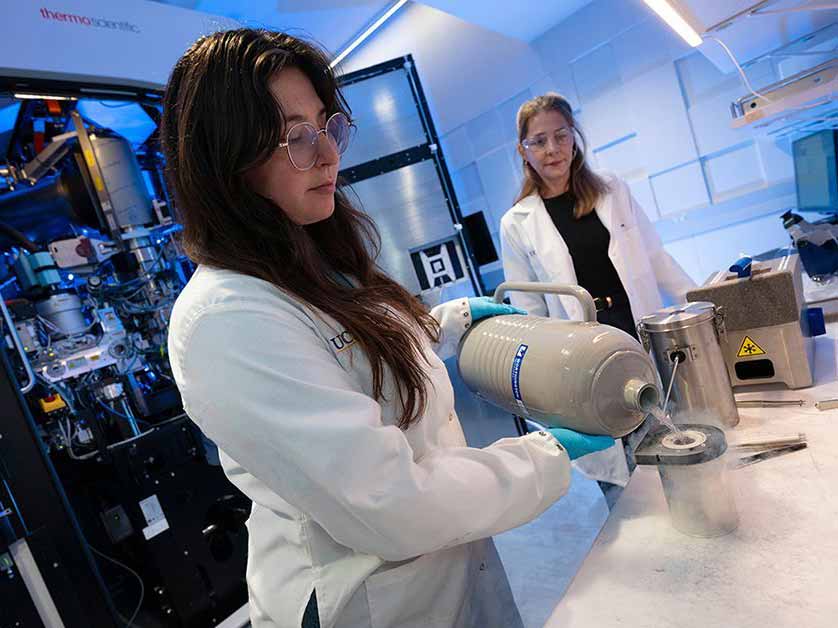
The state-of-the-art technology in the new UC San Diego facility will boost research, education and training
At UC San Diego, a state-of-the-art facility is redefining how scientists approach modern scientific discoveries and breakthroughs.
Watch The Goeddel Family Technology Sandbox is Open for Research on YouTube Read The Goeddel Family Technology Sandbox is Open for Research article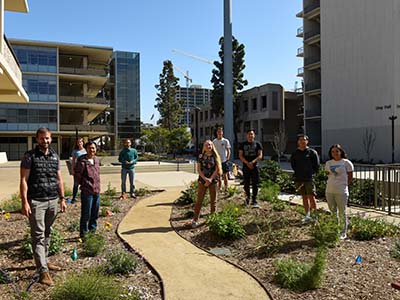
Zoie Andre, an undergraduate researcher in the Perry Lab, and Eleanor Terner, a recent graduate and co-founder of the Bonner Butterfly Garden, share their thoughts on their project
The Bonner Butterfly Garden is a quaint garden offering a variety of native plants for students to admire and study. The garden is a thriving ecosystem boasting a diverse variety of native San Diego plants known to attract butterflies and other pollinators. Here’s an inside look.
Watch A Look into the Bonner Butterfly Garden on YouTube Read A Look into the Bonner Butterfly Garden article
UC San Diego opens the Goeddel Family Technology Sandbox, an unrivaled cluster of state-of-the-art instruments for cutting-edge research and training
UC San Diego and its partners officially opened the Goeddel Family Technology Sandbox, a hub that brings together cutting-edge instruments for science and education. The facility is one of the world’s most pioneering centers for technology across the biological, physical and health sciences.
Watch UC San Diego Opens the Goeddel Family Technology Sandbox
Watch An Inside Look at UC San Diego's New Goeddel Family Technology Sandbox
Read UC San Diego Opens the Goeddel Family Technology Sandbox article

Vision and social maturity are keys to the development of coordinated schooling behavior, neurobiologists find
Watch 'Danionella school swimming' Watch 'Glassfish tracking'
Watch 'Glassfish neural activity' Read Researchers Identify Brain Circuits Tied to the Behavior of Schooling Fish article
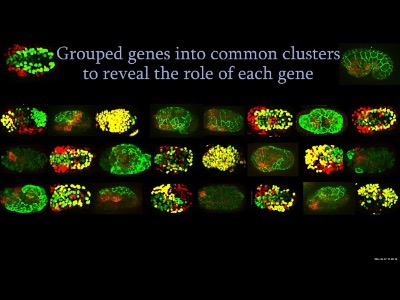
Ten-year project results in new gene databank that includes many genes tied to human disorders
UC San Diego School of Biological Sciences researchers developed an automated system for profiling the function of genes required for embryogenesis, the process by which a fertilized egg, which starts as a single cell, develops into an organism with different tissues, such as skin, digestive tract, neurons and muscles.
Watch Automated Profiling of Gene Function During Embryonic Developmenton YouTube Read New ‘Atlas’ Provides Unprecedented Insights on How Genes Function in Early Embryo Development article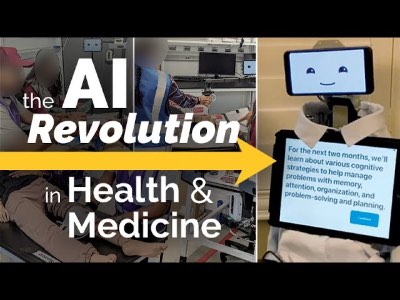
As the influence of AI expands, four experts explore the integration of artificial intelligence in health and medicine
AI is now being implemented inside operating rooms, critical care units for patient evaluation and even within our homes to support those with disabilities. Along with the promise of AI comes ethical and social implications — which are crucial when applied in health care — including the representativeness of datasets used in algorithm training to avoid perpetuating health inequities. Four leading experts share their views on how society is navigating the new frontiers of artificial intelligence and the future of heath care.
Watch A Deep Look into the AI Revolution in Health & Medicineon YouTube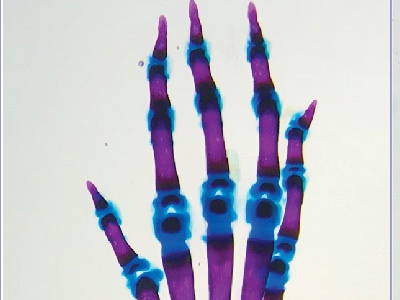
Researchers find a vulnerability within our genomes that can cause developmental defects such as extra fingers and heart disorders
Scientists can now predict which single-letter changes to the DNA within our genomes will alter genetic instructions and disrupt development, leading to changes such as the growth of extra digits and hearts. Such knowledge opens the door to predictions of which enhancer variants underlie disease.
Watch Extra Fingers and Hearts: Pinpointing Changes to Our Genetic Instructions That Disrupt Development on YouTube Read Extra Fingers and Hearts: Pinpointing Changes to Our Genetic Instructions That Disrupt Development article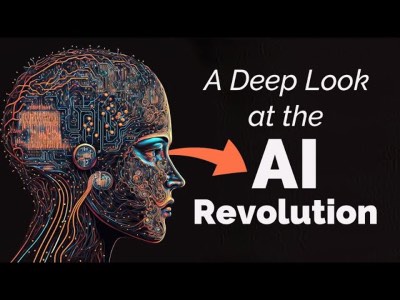
BioSci event explores the power of artificial intelligence to accelerate scientific discovery and shape biomedical research
“A Deep Look into the AI Revolution,” a virtual event hosted by the School of Biological Sciences and UCTV, offered attendees a glimpse into how artificial intelligence is being used to accelerate scientific discovery and shape biomedical research, both in academia and industry.
Watch A Deep Look into the AI Revolution on YouTube Read A Deep Look into the AI Revolution article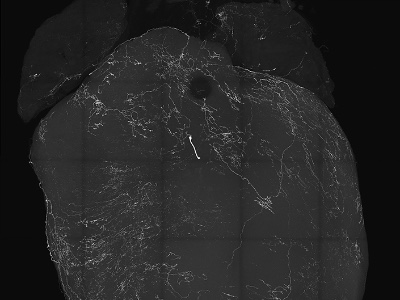
Neurobiologists discover sensory neurons that control fainting, laying a foundation for targeted treatments for related disorders
Nearly 40 percent of people experience syncope, or fainting spells, at least once in their lives. These brief losses of consciousness, whether brought by pain, fear, heat, hyperventilation or other causes, account for a significant portion of hospital emergency room visits. Yet the exact root mechanisms at play when people “pass out” largely have remained a mystery.
Watch What Happens When We Pass Out? Researchers ID New Brain and Heart Connections on YouTube Read What Happens When We Pass Out? Researchers ID New Brain and Heart Connections article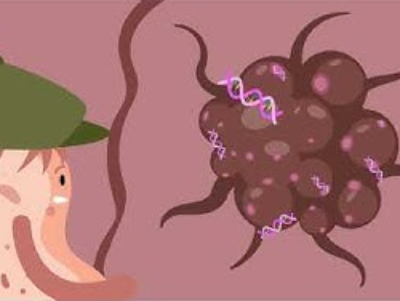
Advanced biosensor leverages gene swapping to identify colon cancer
CATCH technology engineers cells to detect and discriminate cell-free DNA. This may be of value in clinical (cancer and infection) and commercial (ecology, industrial) applications–wherever and whenever, the detection of DNA is valuable.
Watch Engineered Bacteria Detect Tumor DNA on YouTube Read Engineered Bacteria Detect Tumor DNA article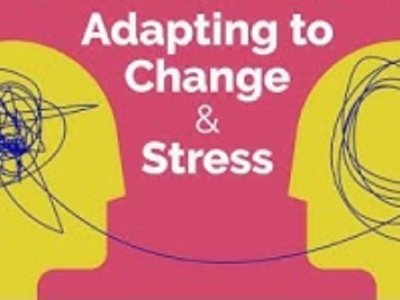
The COVID-19 pandemic ushered in a new era of how we interact and function in society. Our brains and behaviors experienced unprecedented upheavals, forcing us to adapt to new ways of living. In recent years, science has made bold advances in understanding how the brain and its wiring manage new situations and stress. Leading experts in cognitive science, neurobiology and psychology present perspectives on the brain and the fascinating ways it adapts to change and stress. Hear about what happens inside the brain during times of stress; how to self-regulate your brain and bodily states; as well as ideas on mindfulness, radical honesty and how to build emotional resilience.
Watch A Deep Look Inside Our Minds: Adapting to Change and Stress (UCTV) on YouTube Read A Deep Look Inside Our Minds: Adapting to Change and Stress (UCTV) article
UC San Diego's School of Biological Sciences presents another event in their Deep Look series focusing on Earth Day. UC San Diego researchers will offer perspectives from a range of scientific disciplines relevant to the planet and its future. How are wildflowers adapting to climate change? How can humans sustainably co-exist with one of the world’s largest vertebrates, the Asian elephant? How is modern genetics being used to aid the future of the California Condor? Plus, UC San Diego has launched a new Center for Nature, Science and Society to explore the nexus of climate change, biodiversity and human impacts.
Watch A Deep Look in to Earth Day 2023: New Science for a Changing Worldon YouTube Read A Deep Look in to Earth Day 2023: New Science for a Changing Worldarticle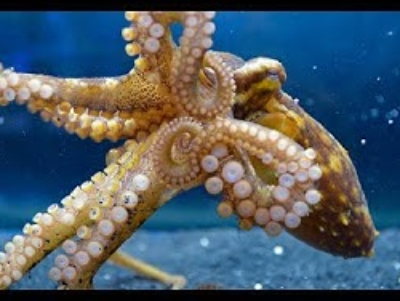
Research published in Nature reveals that the octopus explores the marine environment with sensing features that are evolutionarily related to human brain receptors
Research led by UC San Diego (Hibbs Lab) and Harvard University (Bellono Lab) has traced the evolutionary adaptations of octopus and squid sensing capabilities. The studies, featured on the cover of the journal Nature, reveal evolutionary links to human brain receptors. The researchers describe for the first time the structure of an octopus chemotactile receptor, which octopus arms use for taste-by-touch exploration of the seafloor.
Watch Tracking a New Path to Octopus and Squid Sensing Capabilities on YouTube Read Tracking a New Path to Octopus and Squid Sensing Capabilities article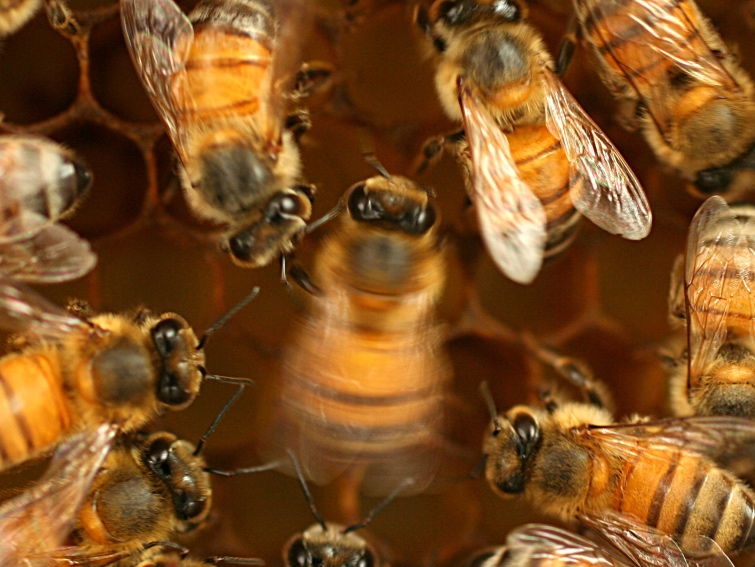
Researchers find that learning and culture are needed for one of the most intricate forms of communication known outside humans
Passing down shared knowledge from one generation to the next is a hallmark of culture and allows animals to rapidly adapt to a changing environment. While widely evident in species ranging from human infants to naked mole rats or fledgling songbirds, early social learning has now been documented in insects.
Watch Honey Bees Can Learn How to Waggle Dance More Accurately If They Can Observe Experienced Bees Firston YouTube Read Honey Bees Can Learn How to Waggle Dance More Accurately If They Can Observe Experienced Bees Firstarticle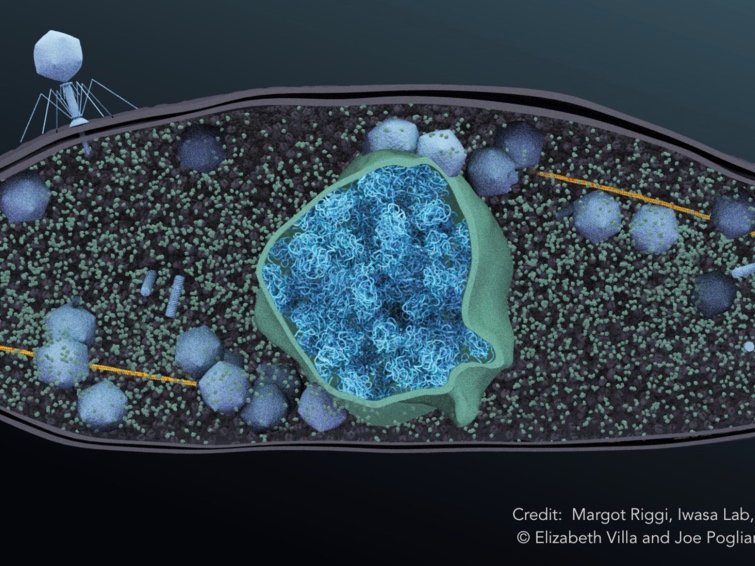
UC San Diego leads initiative aiming to develop bacteriophages as solutions for antibiotic resistance crisis
A nucleus-like compartment (green) is formed to protect the newly synthesized phage genomes from bacterial defense systems. The capsids (gray) of the new phage travel along filaments called PhuZ (yellow) to be delivered to the nucleus where they dock in order to package phage DNA. Eventually, the bacterial cell lyses and the new phage emerge ready to infect new bacteria.
Watch Jumbo Phage Infects a Bacteriumon YouTube Read Jumbo Phage Infects a Bacteriumarticle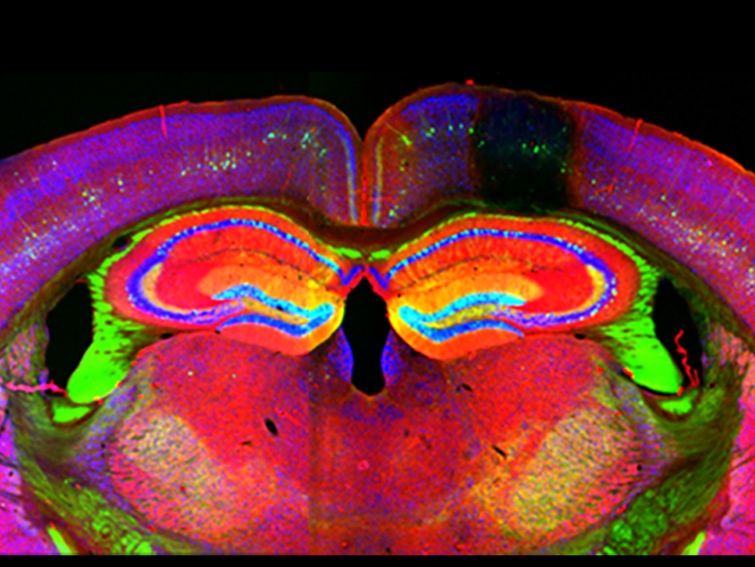
Cells within neurons discovered to take ‘pro-survival’ steps to reduce brain tissue injury
UC San Diego research led by Associate Project Scientist Barbara Calabrese and Professor Shelley Halpain in the School of Biological Sciences details what happens within brain cells as they detect threatening conditions. Cells of neurons, the brain’s transmission connectors, can reorganize themselves into a type of body armor mode of protection when faced with threatening conditions such as during a stroke. The pro-survival mechanism helps reduce brain tissue damage.
Watch Brain Cells Under Attack Don ‘Body Armor’ Response, Offering New Views of Stroke Damageon YouTube Read Brain Cells Under Attack Don ‘Body Armor’ Response, Offering New Views of Stroke Damagearticle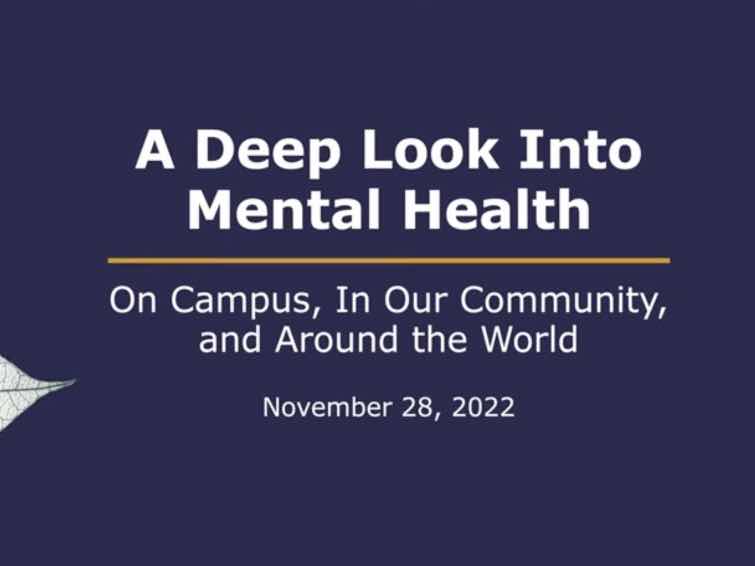
Join us as we explore the mental health crisis on college campuses, views from underserved communities and international perspectives on mental health.
Watch A Deep Look into Mental Health: On Campus, In Our Community and Around the World on YouTube Read A Deep Look into Mental Health: On Campus, In Our Community and Around the Worldarticle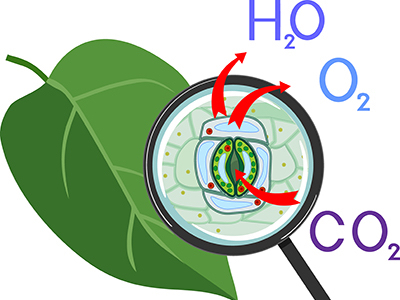
Surprised biologists discover how two proteins work together to form long-sought plant water loss-regulating sensor, carrying implications for trees, crops and wildfires
Using a mix of tools and research approaches, scientists at UC San Diego have identified a long-sought carbon dioxide sensor in plants, key for controlling water evaporation, photosynthesis and plant growth. The discovery revealed that two proteins work together to form the sensor, carrying implications for trees, crops and wildfires.
Watch Researchers Identify Elusive Carbon Dioxide Sensor in Plants that Controls Water Losson YouTube Read Researchers Identify Elusive Carbon Dioxide Sensor in Plants that Controls Water Lossarticle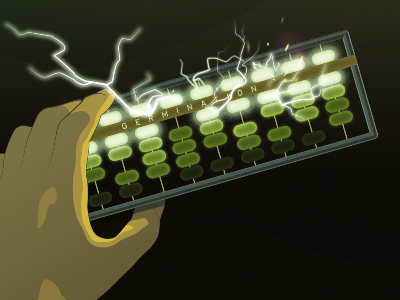
Unexpected activity in dormant bacterial cells offers lessons for understanding life in extreme states on Earth and perhaps other planets
Facing starvation and stress conditions, some bacteria enter a dormant state in which life processes stop. Shutting down into a deep dormancy allows these cells, called spores, to withstand punishing extremes of heat, pressure and even the harsh conditions of outer space.
Watch The Thinking Undead: How Dormant Bacteria Calculate Their Return to Life on YouTube Read The Thinking Undead: How Dormant Bacteria Calculate Their Return to Life article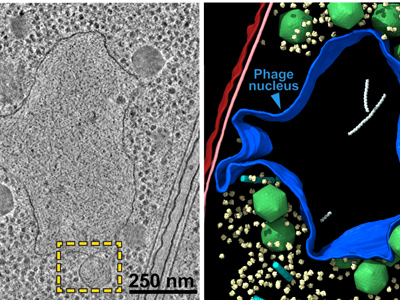
New technologies provide unprecedented view of virus’ ‘weird biology’—critical for future biomedical applications against bacterial infections
UC San Diego scientists are using new technologies to obtain unprecedented looks inside viruses and their unique abilities to infect and destroy bacteria. Using cryo-EM and other technologies, the researchers found that jumbo phage cells feature a compartment that is surprisingly similar to the nucleus of human cells.
Watch Giant Viruses Build a Cell Nucleus Surprisingly Like Our Own on YouTube Read Giant Viruses Build a Cell Nucleus Surprisingly Like Our Own article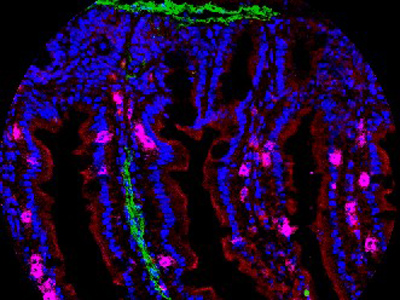
A new atlas of tissue-resident memory T cells offers hope for therapies based on protective 'first responders'
UC San Diego School of Biological Sciences researchers have gained ground in understanding unique immune cells equipped to remember the identities of malicious invaders. The researchers developed a new atlas that describes tissue-resident memory T cells in diverse tissue settings, boosting the prospects of the development of immune defense strategies to enhance immunity at sites vulnerable to infection.
Watch Immune Cells Anchored in Tissues Offer Unique Defenses Against Pathogens and Cancers on YouTube Read Immune Cells Anchored in Tissues Offer Unique Defenses Against Pathogens and Cancers article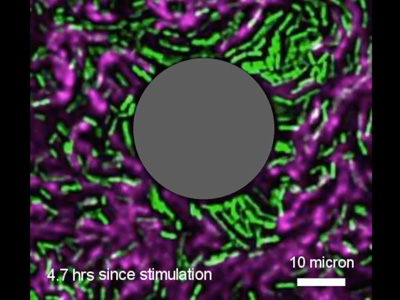
Scientists find that electrical shocks can change the types of cells in bacterial communities, offering a new approach to precisely control bacteria
Molecular biologists and physicists at the University of California San Diego have joined forces to develop a novel method of using electrical shocks to control the development of communities of bacteria.
Watch Researchers Manipulate Demographic of Bacterial Community with Novel Electronic Technology on YouTube Read Researchers Manipulate Demographic of Bacterial Community with Novel Electronic Technology article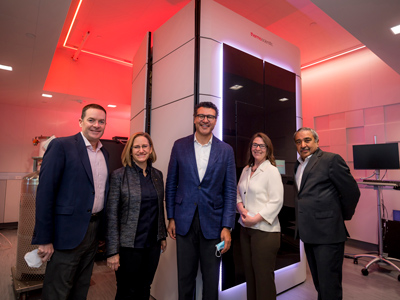
Groundbreaking 10-year agreement to accelerate research and technology innovation, develop diverse talent and achieve ambitious sustainability goals
The University of California San Diego and Thermo Fisher Scientific have agreed to form a transformational 10-year strategic partnership that leverages the leading expertise of each organization.
Watch UC San Diego and Thermo Fisher Scientific Enter Innovative Strategic Partnership on YouTube Read UC San Diego and Thermo Fisher Scientific Enter Innovative Strategic Partnership article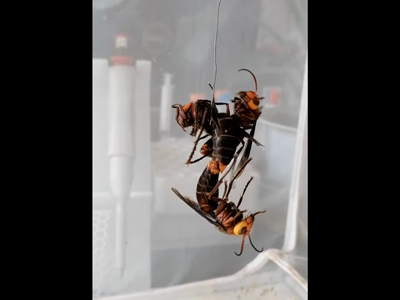
Chemicals used as bait to trap and track so-called 'murder hornets' as they expand their footprint in the Western United States
The world's largest hornet has been the focus of extensive news coverage of late due to its menacing appearance and expanding footprint in North America.
Watch Researchers ID Sex Pheromone of Invasive Giant Hornet Video 1 on YouTube Watch Researchers ID Sex Pheromone of Invasive Giant Hornet Video 2 on YouTube Read Researchers ID Sex Pheromone of Invasive Giant Hornet article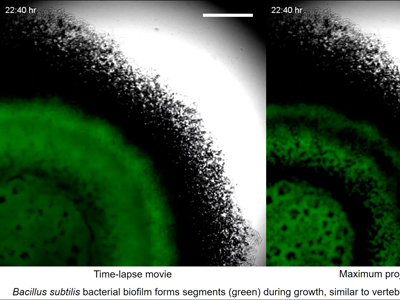
Genetic mechanism found that enables communities of bacterial cells to organize into surprisingly sophisticated segments, revealing a similarity to how plants and animals develop
Over the past several years, research from University of California San Diego biologist Gürol Süel's laboratory has uncovered a series of remarkable features exhibited by clusters of bacteria that live together in communities known as biofilms.
Watch 'Simple' Bacteria Found to Organize in Elaborate Patterns on YouTube Read 'Simple' Bacteria Found to Organize in Elaborate Patterns article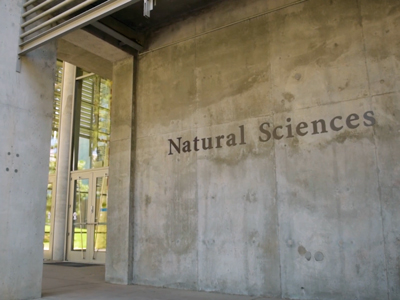
UC San Diego's Division of Biological Sciences has initiated a Cooperative Education (Co-Op) Program that offers a paid year-long, immersive work and training experience in an industrial setting. In tandem with the Co-Op Program, the division also initiated a Biological Sciences Corporate Affiliate Program, or "BioCAP," to strengthen links to the San Diego region's deep roster of life sciences and biotechnology companies.
Watch UC San Diego Launches Life Sciences Cooperative Education and Corporate Affiliates Programs on YouTube Read UC San Diego Launches Life Sciences Cooperative Education and Corporate Affiliates Programs article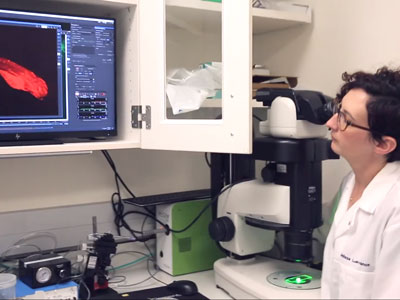
UC San Diego Division of Biological Sciences' Cressida Madigan has been named to receive a 2021 New Innovator Award from the National Institutes of Health (NIH).
Watch NIH Names Cressida Madigan for 2021 New Innovator Award on YouTube Read NIH Names Cressida Madigan for 2021 New Innovator Award article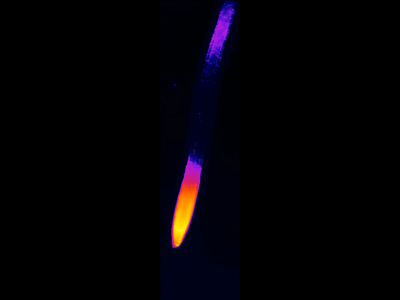
Discovery published in Science by new UC San Diego biologist features compound that triggers the development of plants' lateral roots.
A new study in plants shows that retinoids' tissue-generating capacities are also responsible for the appropriate development of roots.
Watch Growth-promoting, Anti-aging Retinal at the Root of Plant Growth Too on YouTube Read Growth-promoting, Anti-aging Retinal at the Root of Plant Growth Too article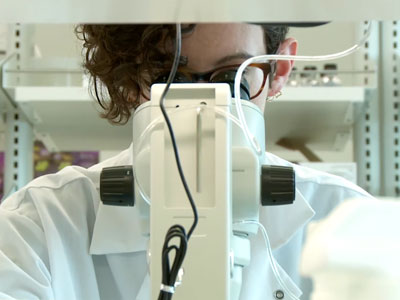
The Pew Charitable Trusts has announced that UC San Diego Division of Biological Sciences Assistant Professor Cressida Madigan has been selected for the 2021 Pew Scholars Program in the Biomedical Sciences.
Watch Cressida Madigan Named 2021 Pew Biomedical Scholar on YouTube Read Cressida Madigan Named 2021 Pew Biomedical Scholar article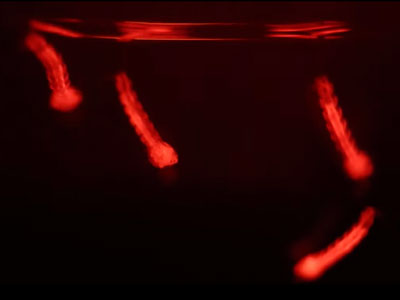
Genetics toolkit targets less researched Culex mosquitoes, which transmit West Nile virus and avian malaria
University of California San Diego scientists have now developed several genetic editing tools that help pave the way to an eventual gene drive designed to stop Culex mosquitoes from spreading disease.
Watch Researchers Create New CRISPR Tools to Help Contain Mosquito Disease Transmission on YouTube Read Researchers Create New CRISPR Tools to Help Contain Mosquito Disease Transmission article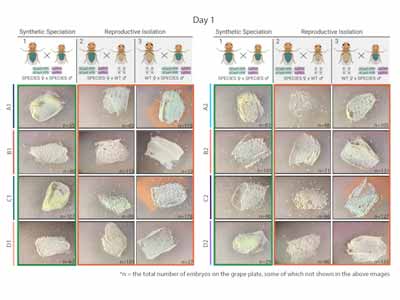
Researchers create novel CRISPR-based fly species as a new method of controlling gene drive spread
Scientists have developed a gene drive with a built-in genetic barrier that is designed to keep the drive under control. The researchers engineered synthetic fly species that, upon release in sufficient numbers, act as gene drives that can spread locally and be reversed if desired.
Watch Synthetic SPECIES Developed for Use as a Confinable Gene Drive on YouTube Read Synthetic SPECIES Developed for Use as a Confinable Gene Drive article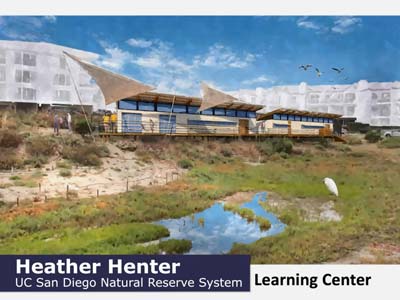
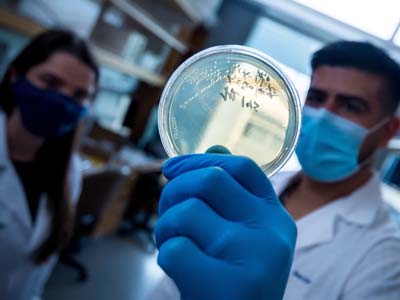
New UC San Diego biologist endeavors to communicate the safety and life-saving importance of COVID-19 vaccination in underserved communities
Assistant Professor Fabian Rivera-Chávez recently worked alongside colleague Dr. Alli Weis at the University of Utah School of Medicine to publish an article in Spanish in the Los Angeles Times about vaccine safety, part of his efforts to communicate the importance of vaccination in underserved communities.
Watch A Push to Inoculate Vaccination Disparity on YouTube Read A Push to Inoculate Vaccination Disparity article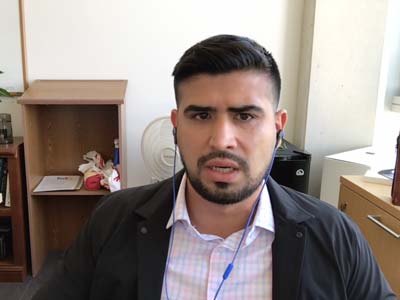
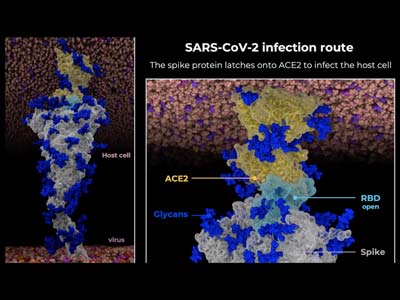
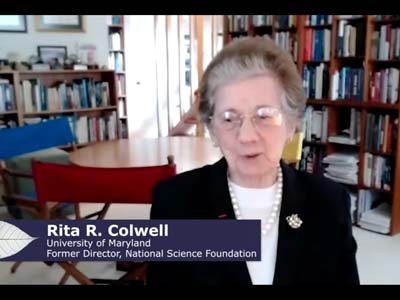
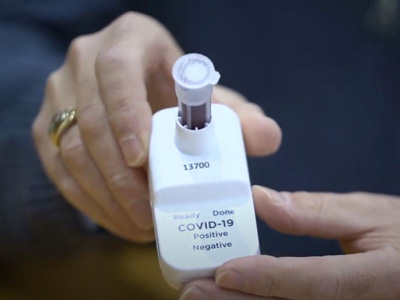
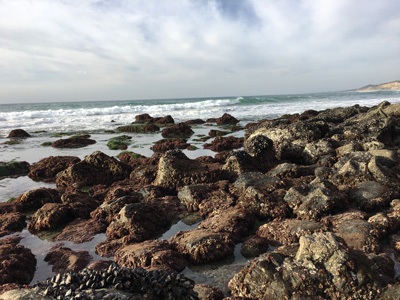
New analyses reveal how over 60 years a critical marine species has responded to ocean acidification
Watch Ocean Acidification is Transforming California Mussel Shells on YouTube Read Ocean Acidification is Transforming California Mussel Shells article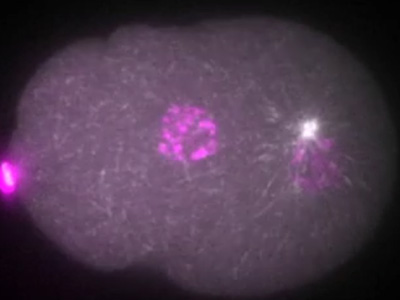
Researchers use novel probe to witness how a 'matchmaker' molecule puts the brake on cell division until components are ready to be split
Watch on Wait for Me: Cell Biologists Decipher Signal that Ensures No Chromosome is Left Behind YouTube Read Wait for Me: Cell Biologists Decipher Signal that Ensures No Chromosome is Left Behind article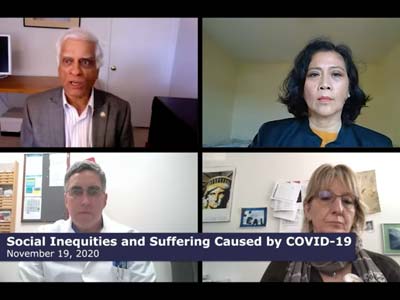
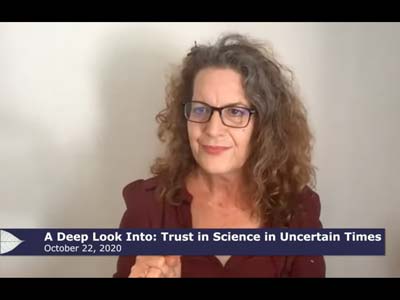
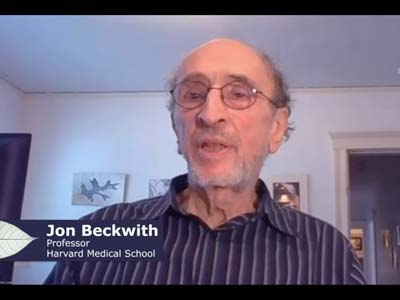
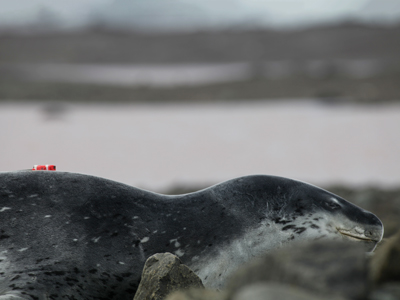
If you've ever seen a leopard seal in a film or documentary, chances are it was viciously tearing apart a penguin. Such images are captivating, but this portrayal is incomplete and, more importantly, inaccurate. Leopard seals are complex apex predators that shape their ecosystems in critical ways. Although poorly studied in the past, a recent collaborative study published by NOAA Fisheries and UC San Diego researchers in BMC Ecology has shed some light on the impact these large predators are having in the Antarctic.
Watch on From the Field: Innovative Animal-borne Video and Sampling Show Antarctic Leopard Seals as Adaptable Apex Predators YouTube Read From the Field: Innovative Animal-borne Video and Sampling Show Antarctic Leopard Seals as Adaptable Apex Predators article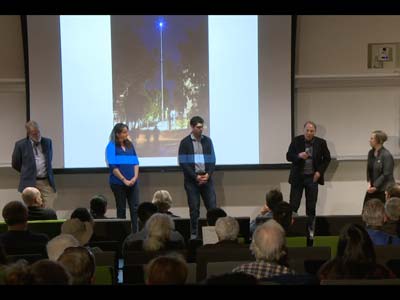
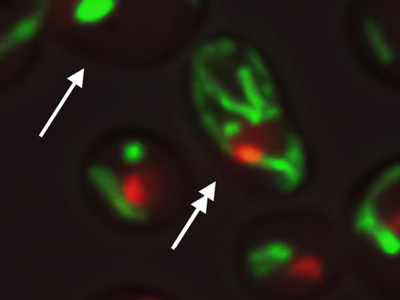
Identifying a master aging circuit allows biologists to genetically engineer prolonged life
Molecular biologists and bioengineers at the University of California San Diego have unraveled key mechanisms behind the mysteries of aging. They isolated two distinct paths that cells travel during aging and engineered a new way to genetically program these processes to extend lifespan.
Watch on Researchers Discover Two Paths of Aging and New Insights on Promoting Healthspan YouTube Read Researchers Discover Two Paths of Aging and New Insights on Promoting Healthspan article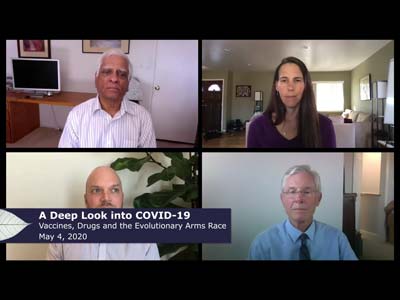
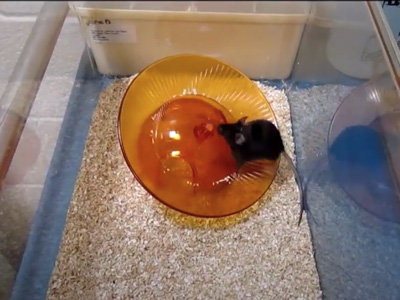
Researchers find switch in chemical messaging is key prelude to motor skill acquisition
Watch Exercise Boosts Motor Skill Learning Via Changes in Brain's Transmitters Video 1 on YouTube Watch Exercise Boosts Motor Skill Learning Via Changes in Brain's Transmitters Video 2 on YouTube Read Exercise Boosts Motor Skill Learning Via Changes in Brain's Transmitters article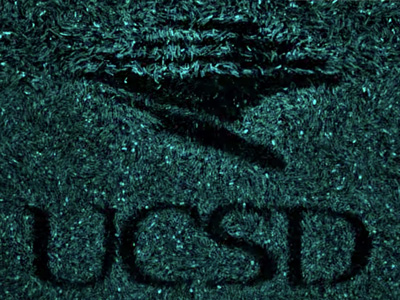
Discovery draws surprising parallels between low-level organisms and sophisticated neurons; lays the groundwork for memory-capable biological systems
Watch They Remember: Communities of Microbes Found to Have Working Memory on YouTube Read They Remember: Communities of Microbes Found to Have Working Memory article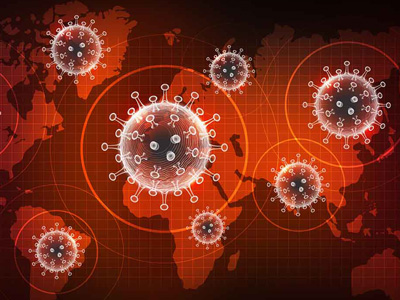
UCTV roundtable explores the biological roots and spread of the global SARS-CoV-2 virus
Of the hundreds of coronaviruses known to exist, many are relatively harmless. Coronaviruses infect your nose, sinuses and upper throat but often result in nothing more than a common cold.
Watch A Deep Look into the Biology and Evolution of COVID-19 on YouTube Read A Deep Look into the Biology and Evolution of COVID-19 article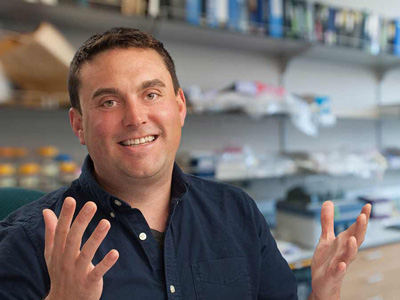
Podcasted class on UCTV and other outlets to analyze the biological roots and spread of coronavirus
Biological Sciences Assistant Professor Justin Meyer oversees a laboratory that specializes in the evolution of viruses and the natural processes that hasten their spread. He grows viruses in petri dishes and studies them as they evolve in real time, every so often watching them mutate onto new species.
Watch Dissecting COVID-19: Biology Professor Opens Infectious Disease Course to Public Audiences on UC-TV Read Dissecting COVID-19: Biology Professor Opens Infectious Disease Course to Public Audiences article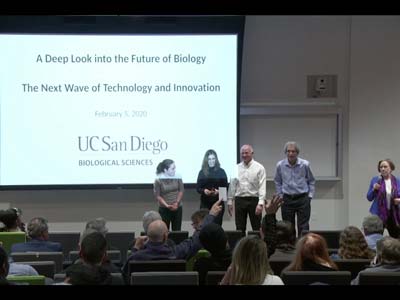
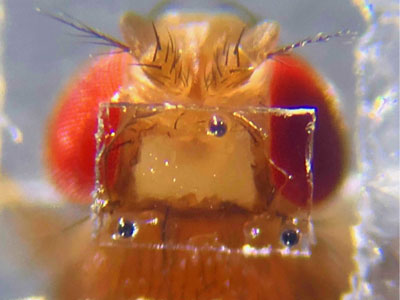
For the first time researchers record uninhibited fly brain activities during various stages of mating
What happens in the brain during courtship? During sex? Scientists at the University of California San Diego have a much clearer idea thanks to the evolution of an advanced imaging system designed to record ultra-precise brain activities in flies.
Watch Flyception 2.0: New Imaging Technology Tracks Complex Social Behavior on YouTube Read Flyception 2.0: New Imaging Technology Tracks Complex Social Behavior article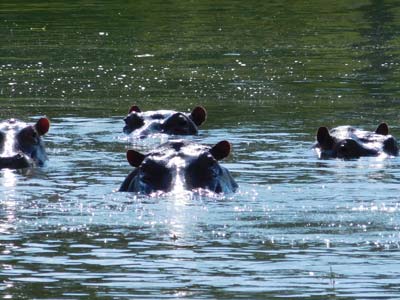
Study on the impacts of the world's largest invasive animal in Colombia provides key insight into the future of a growing population
Four hours east of Medellín in northern Colombia's Puerto Triunfo municipality, the sprawling hacienda constructed by infamous drug lord Pablo Escobar of "Narcos" fame has become a tourist attraction. When Escobar's empire crashed, the exotic animals housed at his family's zoo, including rhinos, giraffes and zebras, were safely relocated to new homes… except for the hippopotamuses.
Watch Drug Lord's Hippos Make Their Mark on Foreign Ecosystem on YouTube Read Drug Lord's Hippos Make Their Mark on Foreign Ecosystem article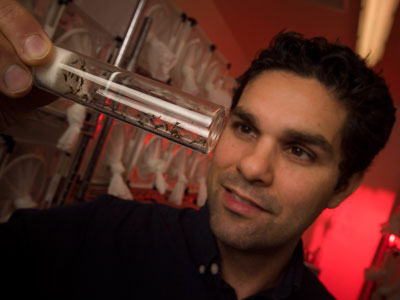
Researchers develop the first mosquitoes synthetically designed to neutralize many types of the widespread infectious disease
An international team of scientists has synthetically engineered mosquitoes that halt the transmission of the dengue virus.
Watch Mosquitoes Engineered to Repel Dengue Virus on YouTube Read Mosquitoes Engineered to Repel Dengue Virus article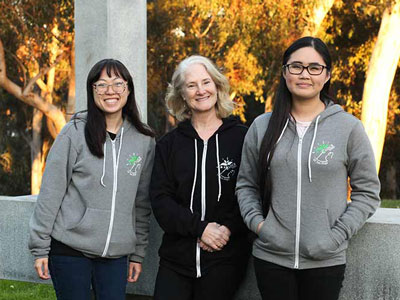
UC San Diego students, scientists drive new initiative aimed at helping the public 'see the light' on circadian rhythms and sleep health
At the start of the day, we all do it. We reflexively reach for our phones. As the day winds down, many of us can't help but do the same. We lie in bed as the luminous glow of our phones—along with TVs and tablets, in many cases—shines into our eyes.
Watch Waking Up to Why Sleep Health Matters on YouTube Read Waking Up to Why Sleep Health Matters article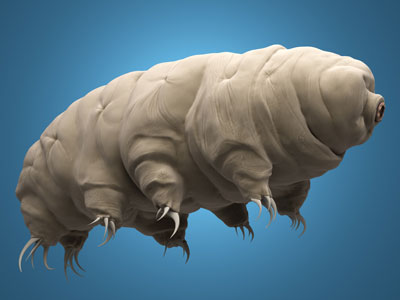
Researchers discover that a protein in tiny tardigrades binds and forms a protective cloud against extreme survival threats such as radiation damage
Scientists at the University of California San Diego have gained a new understanding of how tardigrades are protected in extreme conditions. Their findings are published in the journal eLife on Oct. 1, 2019.
Watch Cracking How 'Water Bears' Survive the Extremes on YouTube Read Cracking How 'Water Bears' Survive the Extremes article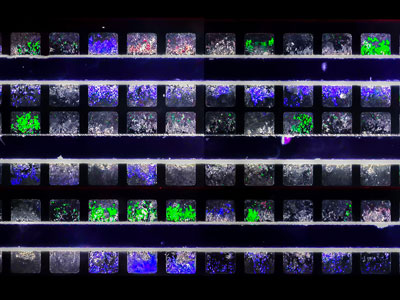
Bioengineers and biologists at the University of California San Diego have developed a method to significantly extend the life of gene circuits used to instruct microbes to do things such as produce and deliver drugs, break down chemicals and serve as environmental sensors.
Watch Synthetic Biologists Extend Functional Life of Cancer-Fighting Circuitry in Microbes on YouTube Read Synthetic Biologists Extend Functional Life of Cancer-Fighting Circuitry in Microbes article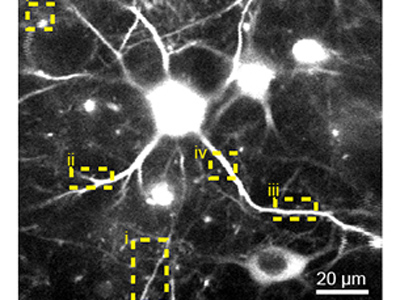
Neurophysicists make new recording of nerve signals by adapting tools of astronomers
Recently, UC San Diego Professor David Kleinfeld, along with postdoctoral fellow Rui Liu, realized how to adopt a process called "adaptive optics" (AO) to correct for changes in the density and moisture of air in the atmosphere to correct microscopic images for the scattering of light that occurs in brain tissue.
Watch Borrowing from Astronomy to Rob the Twinkle from Brain Imagery on YouTube Read Borrowing from Astronomy to Rob the Twinkle from Brain Imagery article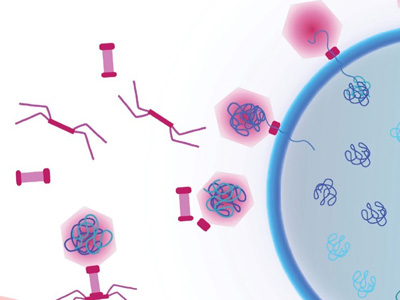
State-of-the-art technologies reveal bacterial cells organized like human cells, offering insights for new phage therapies on untreatable infections
Now, using advanced technologies to explore the inner workings of bacteria in unprecedented detail, biologists at the University of California San Diego have discovered that in fact bacteria have more in common with sophisticated human cells than previously known.
Watch Viruses Found to Use Intricate 'Treadmill' to Move Cargo across Bacterial Cells on YouTube Read Viruses Found to Use Intricate 'Treadmill' to Move Cargo across Bacterial Cells article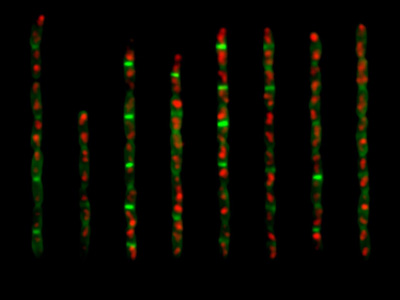
Team of biologists, engineers and physicists uncover origins of precise cellular reproduction
Working with bacteria, a multidisciplinary team at the University of California San Diego has provided new insight into a longstanding question in science: What are the underlying mechanisms that control the size of cells?
Watch Researchers Unravel Mechanisms that Control Cell Size on YouTube Read Researchers Unravel Mechanisms that Control Cell Size article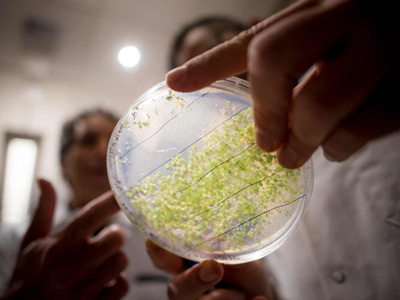
Basic science yields discoveries that are crucial to our lives and the world we inhabit, generating advances that enrich our knowledge about life, health and the natural wonders that shape our existence. But in the modern era of instant gratification and razor-thin attention spans, such contributions are too often supplanted by glitzy tweets and bite-sized news nuggets.
Watch Shatterproof: The Seeds of a Blockbuster Discovery on YouTube Read Shatterproof: The Seeds of a Blockbuster Discovery article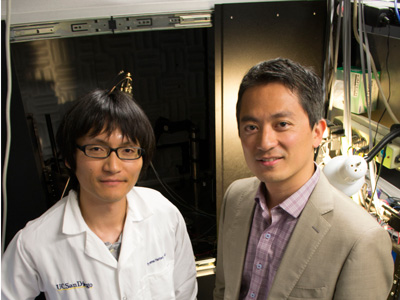
Data from mouse neurons point to unexpected brain region, carrying implications for health and disease
Neurobiologists at the University of California San Diego have pinpointed the brain area responsible for value decisions that are made based on past experiences.
Watch Scientists Locate Brain Area Where Value Decisions Are Made Video 1 on YouTube Watch Scientists Locate Brain Area Where Value Decisions Are Made Video 2 on YouTube Read article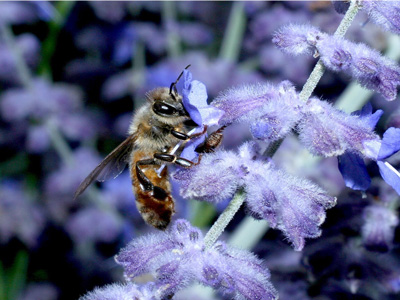
Combined with common fungicide, 'bee safe' Sivanto leads to abnormal behavior and lower survival
A recently approved pesticide growing in popularity around the world was developed as a "bee safe" product, designed to kill a broad spectrum of insect pests but not harm pollinators.
Watch Pesticide Cocktail Can Harm Honey Bees on YouTube Read Pesticide Cocktail Can Harm Honey Bees article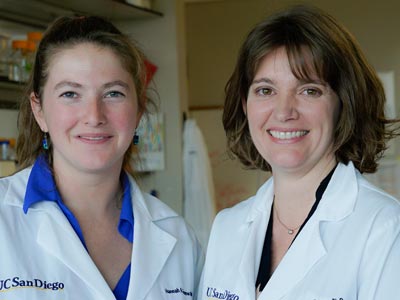
Technology offers powerful new genetic tools for human disease research in rodents
Biologists at the University of California San Diego have developed the world's first CRISPR/Cas9-based approach to control genetic inheritance in a mammal.
Watch UC San Diego Researchers First to Use CRISPR/Cas9 to Control Genetic Inheritance in Mice on YouTube Read UC San Diego Researchers First to Use CRISPR/Cas9 to Control Genetic Inheritance in Mice article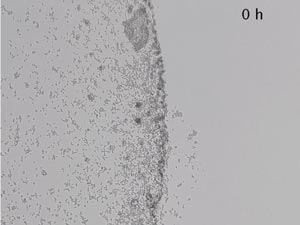
University of California San Diego Biologist Susan Golden and her colleagues have used cyanobacteria as a key model for circadian rhythm studies, analyzing the organism's 24-hour regular cycles that operate with the precision of a mechanical clock.
Watch Coming to Light: Researchers Document Surprise Mobility in Wild Bacteria Video 1 on YouTube Watch Coming to Light: Researchers Document Surprise Mobility in Wild Bacteria Video 2 on YouTube Read Coming to Light: Researchers Document Surprise Mobility in Wild Bacteria article
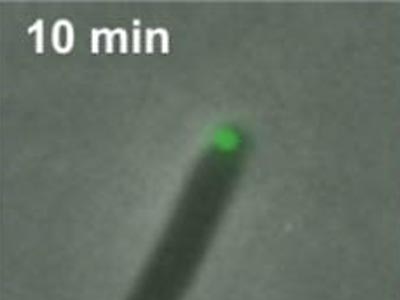
'Minicell' pods, used in drug delivery, discard damaged proteins to prolong life
Scientists have known for decades that certain bacteria produce small spherical versions of themselves. Although they lack basic materials to reproduce or function like normal cells, recent interest in such "minicells" has spiked due to their proficiency as nano-sized delivery tools for drugs and vaccines to targeted cells and tissues.
Watch Taking out the (Life-threatening) Garbage: Bacteria Eject Trash to Survive on YouTube Read Taking out the (Life-threatening) Garbage: Bacteria Eject Trash to Survive article
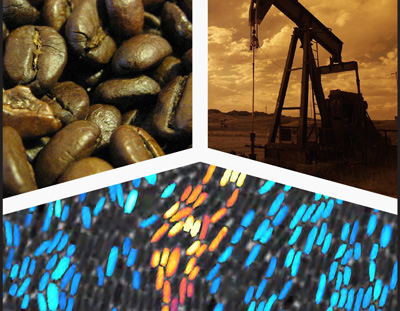
Clusters of bacteria employ the same 'percolation' method we use to brew coffee
A theory known as "percolation" is now helping microbiologists at the University of California San Diego explain how communities of bacteria can effectively relay signals across long distances.
Watch Bacterial Communities Use Sophisticated Strategy to Communicate over Long Distances on YouTube Read Bacterial Communities Use Sophisticated Strategy to Communicate over Long Distances article
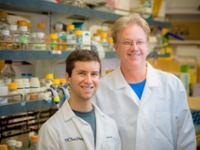
Researchers at the University of California San Diego Center for Microbiome Innovation have identified the mechanism by which a clinically relevant bacterium may gain antibiotic resistance, and have come up with a model for predicting the conditions under which it spreads. The findings, which establish a framework for understanding, quantifying and hopefully combating the emergence of superbugs, were published in a recent paper in eLife.
Watch Researchers Film Bacteria Using "Hand-to-Hand" Combat to Steal Antibiotic Resistance Genes on YouTube Read Researchers Film Bacteria Using "Hand-to-Hand" Combat to Steal Antibiotic Resistance Genes article
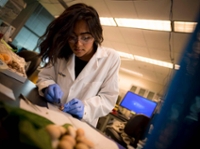
Multidisciplinary issues need multidisciplinary solutions. That's biology major and visual arts minor Anika Ullah's mantra. Ullah believes that when put together, visual media, science and community engagement can serve as powerful tools for gaining insight into current health-related issues, shaping scientific study design and increasing public agency—and she's dedicated her undergraduate career to three local, binational and global projects that accomplish that aim.
Watch UC San Diego Undergraduate Synthesizes Visual Arts, Community Engagement and Scientific Research for Health Activism on YouTube Read UC San Diego Undergraduate Synthesizes Visual Arts, Community Engagement and Scientific Research for Health Activism article
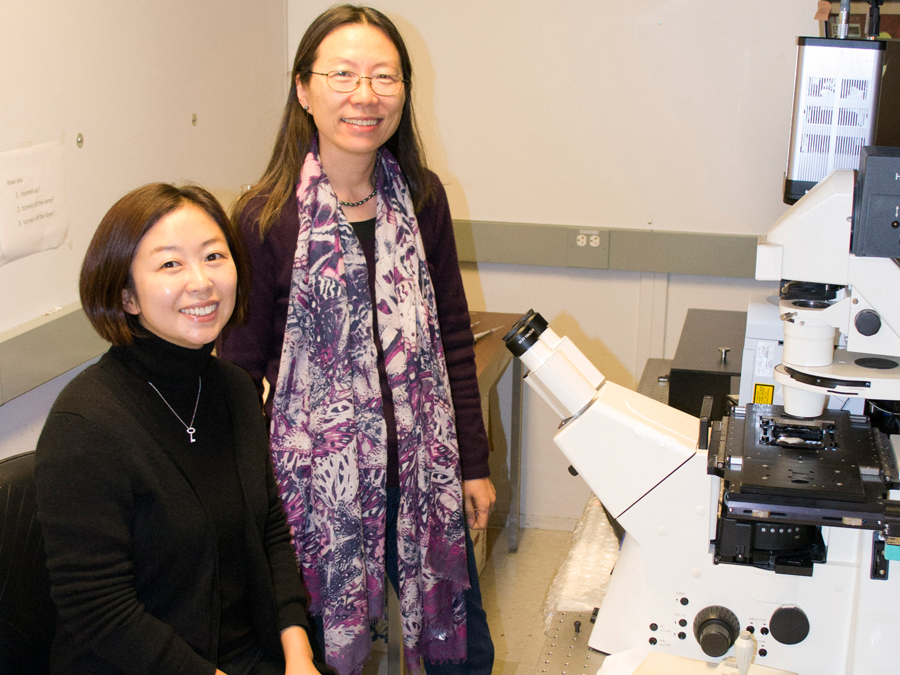
Finding could pave road to regrowth after traumatic injuries, stroke and spinal damage
On the hunt for genes involved in regenerating critical nerve fibers called axons, biologists at the University of California San Diego came away with a surprise: The discovery of a new genetic pathway that carries hope for victims of traumatic injuries—from stroke to spinal cord damage.
UC San Diego Biological Sciences Assistant Project Scientist Kyung Won Kim, Professor Yishi Jin and their colleagues conducted a large-scale genetic screening in the roundworm C. elegans seeking ultimately to understand genetic influences that might limit nerve regrowth in humans. Unexpectedly, the researchers found the PIWI-interacting small RNA (piRNA) pathway—long believed to be restricted to function in the germline—plays an active role in neuron damage regeneration.
Watch Discovery Offers New Genetic Pathway for Injured Nerve Regeneration on YouTube Read Discovery Offers New Genetic Pathway for Injured Nerve Regeneration article
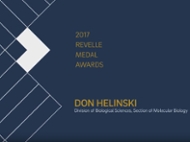
Biologist receives Chancellor's highest honor for a half-century of contributions
Don Helinski, professor emeritus in the Division of Biological Sciences' Section of Molecular Biology, has been awarded a 2017 Revelle Medal, the highest honor given by the Chancellor to a current or former UC San Diego faculty member. Helinski was honored with the medal on Nov. 17, 2017 during the university's Founders Day celebration.
Watch Don Helinski Honored with Revelle Medal on YouTube Read Don Helinski Honored with Revelle Medalarticle
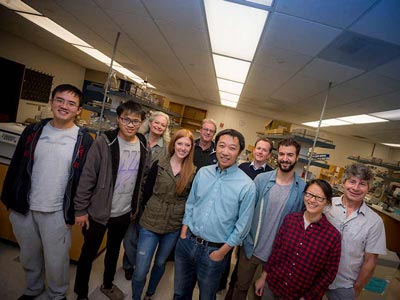
Multi-pronged approach reveals a delicate balance required for longevity
Understanding the factors that control aging has been one of humanity's endless pursuits, from the mystical fountain of youth to practical healthful regimens to prolong life expectancy.
A team of scientists at the University of California San Diego has now helped decipher the dynamics that control how our cells age, and with it implications for extending human longevity. As described in a study published in Proceedings of the National Academy of Sciences, a group led by biologist Nan Hao employed a combination of technologies in engineering, computer science and biology to analyze molecular processes that influence aging.
Watch Scientists Decipher Mechanisms Underlying the Biology of Aging Video 1 on YouTube Watch Scientists Decipher Mechanisms Underlying the Biology of Aging Video 2 on YouTube Read Scientists Decipher Mechanisms Underlying the Biology of Aging article
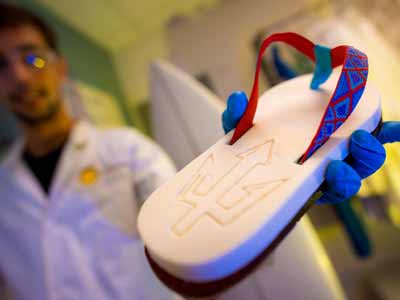
From algae surfboards to sustainable shoes, a campus innovation that could change the world
UC San Diego students and researchers have produced the world's first algae-based, renewable flip flops.
The first prototypes of their new invention, developed over the summer in a York Hall chemistry laboratory, consist of a flexible, spongy slipper adorned with a Triton logo and a simple strap—fairly basic, as flip flops go.
But when they go into full production later this academic year at what researchers hope will be a projected cost of $3 a pair, the impact of this campus innovation could be revolutionary, changing the world for the better environmentally.
Watch A Flip Flop Revolution on YouTube Read A Flip Flop Revolution article
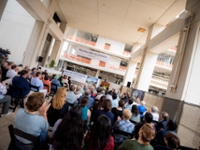
C San Diego celebrated the dedication of a new building for the divisions of Biological and Physical Sciences on Sept. 12 with a special announcement. The cutting-edge science building will bear the name Tata Hall for the Sciences, or Tata Hall, in recognition of a $70 million gift from the Tata Trusts, which was committed last year to create the binational Tata Institute for Genetics and Society.
Watch Tata Institute for Genetics and Society Advances with Building Naming, Inaugural Chair Holders Video 1 on YouTube Watch Tata Institute for Genetics and Society Advances with Building Naming, Inaugural Chair Holders Video 2 on Youtube
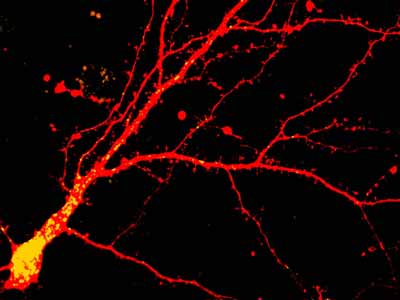
Researchers probe key processes potentially underlying a variety of neurological diseases
Scientists at the University of California San Diego, led by graduate student Marisa Goo under the guidance of Professor Gentry Patrick, have provided the first evidence that lysosomes can travel to distant parts of neurons to branch-like areas known as dendrites.
Watch A New View for Protein Turnover in the Brain on YouTube Read A New View for Protein Turnover in the Brain article
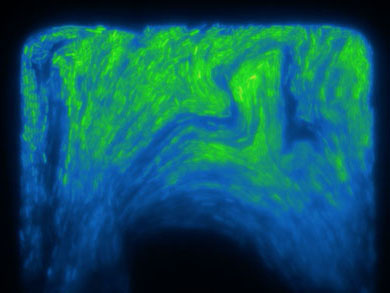
Researchers at the University of California San Diego have invented a new method for controlling gene expression across bacterial colonies. The method involves engineering dynamic DNA copy number changes in a synchronized fashion.
Watch Scientists Invent New Tool for the Synthetic Biologist's Toolbox on YouTube Read Scientists Invent New Tool for the Synthetic Biologist's Toolbox article
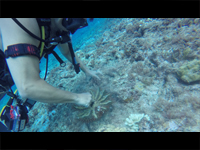
A Scripps Institution of Oceanography at the University of California San Diego-led research team, along with scientists in the UC San Diego Division of Biological Sciences, discovered for the first time that a common marine sponge hosts bacteria that specialize in the production of toxic compounds nearly identical to man-made fire retardants.
Watch Study Finds Bacteria Living in Marine Sponge Produce Toxic Flame Retardant-Like Compounds on YouTube Read Study Finds Bacteria Living in Marine Sponge Produce Toxic Flame Retardant-Like Compounds article
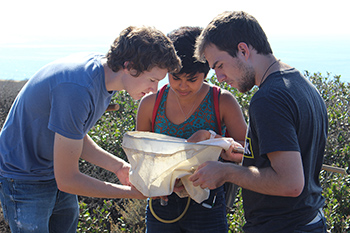
The UC Natural Reserve System (NRS) is a network of 39 (soon to be 40) largely undisturbed properties across the state, set aside to fulfill the mission of the UC: education, research and public service. We are different from state/national parks or other wild lands because we are part of a university, thus research and education are a focus. These sites are living laboratories for researchers and classrooms without walls for students. And because we are a system, we can address important topics like climate change ecosystem-wide. The network includes most habitats in the state, from coast to desert to alpine.
Watch Q&A with Heather Henter, Academic Coordinator, UC San Diego Natural Reserve System on YouTube Read Q&A with Heather Henter, Academic Coordinator, UC San Diego Natural Reserve System article
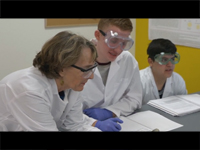
Associate teaching professor among those recognized at Chancellor's Associates Faculty Excellence Awards ceremony
Stephanie Mel, associate teaching professor of molecular biology, was recognized by the UC San Diego Chancellor's Associates for excellence in undergraduate teaching during the 2017 Faculty Excellence Awards.
Watch Stephanie Mel Honored for Exceptional Undergraduate Teaching on YouTube Read Stephanie Mel Honored for Exceptional Undergraduate Teaching article
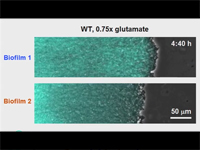
Communities found to coordinate feeding to streamline efficiency
Timesharing, researchers have found, isn't only for vacation properties. While the idea of splitting getaway condos in exotic destinations among various owners has been popular in real estate for decades, biologists at the University of California San Diego have discovered that communities of bacteria have been employing a similar strategy for millions of years.
Watch UC San Diego Biologists Discover Timesharing Strategy in Bacteria Video 1 on YouTube Watch UC San Diego Biologists Discover Timesharing Strategy in Bacteria Video 2 on YouTube Watch UC San Diego Biologists Discover Timesharing Strategy in Bacteria Video 3 on YouTube Read UC San Diego Biologists Discover Timesharing Strategy in Bacteria article
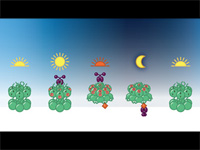
A new paper released in the prestigious journal Science explains how the labs of LiWang and his colleagues captured assemblies of the proteins that direct cyanobacterial circadian rhythms, or biological clocks, in large complexes and made spectroscopic "snapshots" of their different formations using X-ray crystallography and nuclear magnetic resonance (NMR) spectroscopy.
Watch Ancient Biological Clockwork Revealed Using 'Secret Sauce' Video 1 on YouTube Watch Ancient Biological Clockwork Revealed Using 'Secret Sauce' Video 2 on YouTube Read Ancient Biological Clockwork Revealed Using 'Secret Sauce' article
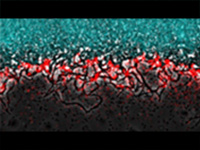
Biologists at UC San Diego who recently found that bacteria resolve social conflicts within their communities and communicate with one another like neurons in the brain have discovered another human-like trait in these apparently not-so-simple, single-celled creatures.
Watch Bacteria Recruit Other Species with Long Range Electrical Signals on YouTube Read Bacteria Recruit Other Species with Long Range Electrical Signals article
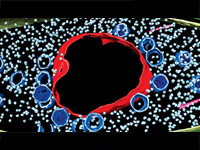
Biologists at UC San Diego have documented for the first time how very large viruses reprogram the cellular machinery of bacteria during infection to more closely resemble an animal or human cell—a process that allows these alien invaders to trick cells into producing hundreds of new viruses, which eventually explode from and kill the cells they infect.
Watch Biologists Discover How Viruses Hijack Cell's Machinery on YouTube Read Biologists Discover How Viruses Hijack Cell's Machinery article
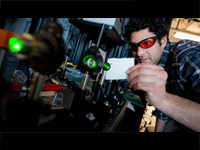
Graduate students in new quantitative biology doctoral program learn to modify microscopes and other instruments to probe frontiers of their emerging discipline
Graduate studies within any single scientific discipline are challenging endeavors on their own. But imagine combining graduate school-level training in physics and mathematics with advanced research in engineering and biology.
Watch Hacking a Revolution in Biology on YouTube Read Hacking a Revolution in Biology article
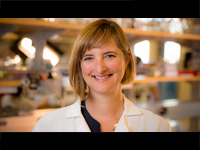
A molecular biology professor at the University of California San Diego who developed an innovative way to understand the development and evolution of microbial communities using cheese is one of 18 early-career scientists and engineers nationwide who have won prestigious 2016 Packard Fellowships for Science and Engineering.
Watch Rachel Dutton Awarded Packard Fellowship on YouTube Read Rachel Dutton Awarded Packard Fellowship article
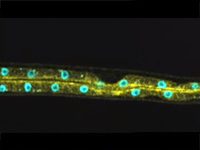
Microsporidia cause diarrhea, an illness called microsporidiosis and even death in immune-compromised individuals.
In spite of those widespread medical problems, scientists were uncertain about how these single-celled fungi reproduced in human or animal cells.
But in a study that employed transparent roundworms, biologists at the University of California San Diego succeeded in directly observing how these microorganisms replicate and spread. And what they saw surprised them.
Watch Single-Celled Fungi Multiply, Alien-Like, by Fusing Cells in Host on YouTube Read Single-Celled Fungi Multiply, Alien-Like, by Fusing Cells in Host article
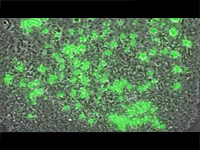
Researchers at the University of California San Diego and the Massachusetts Institute of Technology (MIT) have come up with a strategy for using synthetic biology in therapeutics. The approach enables continual production and release of drugs at disease sites in mice while simultaneously limiting the size, over time, of the populations of bacteria engineered to produce the drugs. The findings are published in the July 20 online issue of Nature.
Watch Synthetic Biology Used to Limit Bacterial Growth and Coordinate Drug Release on YouTube Read Synthetic Biology Used to Limit Bacterial Growth and Coordinate Drug Release article
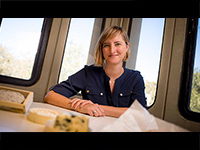
In an innovative effort to understand microbial communities, a UC San Diego biology professor has turned cheese into her 'lab rat'
While many microbiologists build entire research careers around studies of a single microorganism, Rachel Dutton has taken her career in the other direction—examining collections of microbes, but with an unusual twist. She studies what grows on cheese.
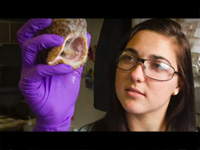
You are only 10 percent human. Ninety percent of the cells that make up our bodies are actually bacteria, viruses, fungi and other microbes. And researchers are now finding that these unique microbial communities — called microbiomes — can greatly influence human and environmental health. The human gut microbiome alone has now been linked to allergies, inflammatory bowel disease, obesity and many other conditions.
Watch Mining Microbes: Division Plays Key Role in Campus Initiative on YouTube Read Mining Microbes: Division Plays Key Role in Campus Initiative article
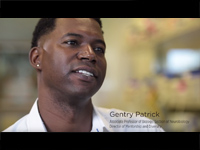
Biology professor strives to serve as example for students from diverse backgrounds
Like many faculty members at UC San Diego, Gentry Patrick arrived on campus with sterling academic credentials: An undergraduate degree from the University of California, Berkeley, a Ph.D. from Harvard University and a postdoctoral fellowship from Caltech.
Watch A Mentor for Success on YouTube Read A Mentor for Success article
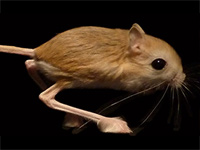
With their tiny forelimbs and long hindlimbs and feet, jerboas are oddly proportioned creatures that look something like a pint-size cross between a kangaroo and the common mouse.
How these 33 species of desert-dwelling rodents from Northern Africa and Asia evolved their remarkable limbs over the past 50 million years from a five-toed, quadrupedal ancestor shared with the modern mouse to the three-toed bipedal jerboa is detailed in a paper published in this week's issue of the journal Current Biology.
Watch Evolution of Kangaroo-Like Jerboas Sheds Light on Limb Development on YouTube Read Evolution of Kangaroo-Like Jerboas Sheds Light on Limb Development article
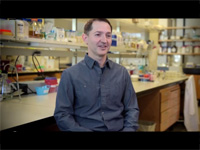
Far from being selfish organisms whose sole purpose is to maximize their own reproduction, bacteria in large communities work for the greater good by resolving a social conflict among individuals to enhance the survival of their entire community.
It turns out that, much like human societies, bacterial communities benefit when they can balance opposing needs within the group.
Watch Resolving Social Conflict Is Key to Survival of Bacterial Communities on YouTube Read Resolving Social Conflict Is Key to Survival of Bacterial Communities article
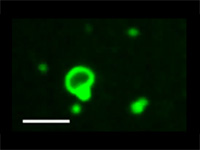
Chemists and biologists at UC San Diego have succeeded in designing and synthesizing an artificial cell membrane capable of sustaining continual growth, just like a living cell.
Watch Scientists Create Synthetic Membranes That Grow Like Living Cells on YouTube Read Scientists Create Synthetic Membranes That Grow Like Living Cells article
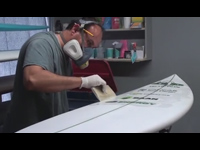
World's first algae-based, sustainable surfboard produced by UC San Diego biology and chemistry students
UC San Diego's efforts to produce innovative and sustainable solutions to the world's environmental problems have resulted in a partnership with the region's surfing industry to create the world's first algae-based, sustainable surfboard.
Watch Surfing into a Greener Future on YouTube Read Surfing into a Greener Future article
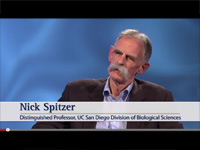
Division of Biological Sciences Professors Darwin Berg and Nick Spitzer, Director of the Kavli Institute for Brain and Mind, discuss the development of neuroscience research at UC San Diego, President Obama's BRAIN Initiative and the emerging field of "neurotechnology."
Watch The Future of Neurosciences at UC San Diego on YouTube Read The Future of Neurosciences at UC San Diego article
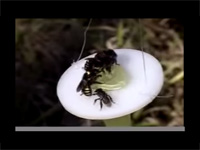
Let's say you're a bee and you've spotted a new and particularly lucrative source of nectar and pollen. What's the best way to communicate the location of this prize cache of food to the rest of your nestmates without revealing it to competitors, or "eavesdropping" spies, outside of the colony?
Watch Why 'Whispers' Among Bees Sometimes Evolve Into 'Shouts' on YouTube Read Why 'Whispers' Among Bees Sometimes Evolve Into 'Shouts' article
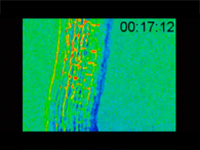
Biologists at UC San Diego have succeeded in visualizing the movement within plants of a key hormone responsible for growth and resistance to drought.
Watch Biologists Develop Nanosensors to Visualize Movements and Distribution of Plant Stress Hormone on YouTube Read Biologists Develop Nanosensors to Visualize Movements and Distribution of Plant Stress Hormone article
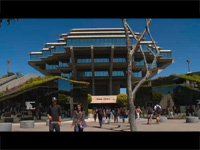
Biology majors and students taking undergraduate biology courses will see some new changes to improve the undergraduate experience this year, according to Dean Bill McGinnis.
Watch New Dean Seeks to Improve Undergraduate Experience on UCSD-TV Read New Dean Seeks to Improve Undergraduate Experience article
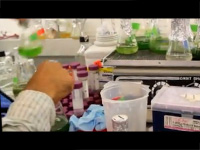
Biologists at UC San Diego have succeeded in genetically engineering algae to produce a complex and expensive human therapeutic drug used to treat cancer.
Watch Biologists Engineer Algae to Make Complex Anti-Cancer 'Designer' Drug on YouTube Read Biologists Engineer Algae to Make Complex Anti-Cancer 'Designer' Drug article
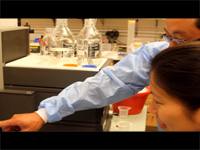
Biologists at UC San Diego have unraveled the anti-viral mechanism of a human gene that may explain why some people infected with HIV have much higher amounts of virus in their bloodstreams than others.
Watch Discovery May Shed Light on Why Some HIV-Positive Patients Have More Virus on YouTube Read Discovery May Shed Light on Why Some HIV-Positive Patients Have More Virus article
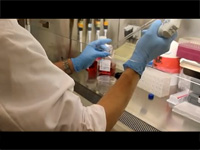
Biologists at UC San Diego have discovered a chemical that offers a completely new and promising direction for the development of drugs to treat metabolic disorders such as type 2 diabetes–a major public health concern in the United States due to the current obesity epidemic.
Watch Discovery of Chemical That Affects Biological Clock Offers New Way to Treat Diabetes on YouTube Read Discovery of Chemical That Affects Biological Clock Offers New Way to Treat Diabetes article
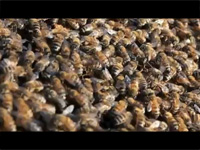
Biologists at UC San Diego have discovered that a small dose of a commonly used crop pesticide turns honey bees into "picky eaters" and affects their ability to recruit their nestmates to otherwise good sources of food.
Watch Commonly Used Pesticide Turns Honey Bees into 'Picky Eaters' on YouTube Read Commonly Used Pesticide Turns Honey Bees into 'Picky Eaters' article
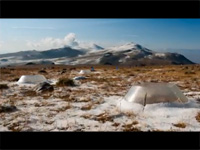
Experiments may dramatically underestimate how plants will respond to climate change in the future.
Watch Study Shows Experiments Underestimate Plant Responses to Climate Change on YouTube Read Study Shows Experiments Underestimate Plant Responses to Climate Change article
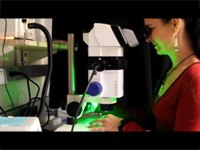
The specific mechanisms by which humans and other animals are able to discriminate between disease-causing microbes and innocuous ones in order to rapidly respond to infections have long been a mystery to scientists. But a study conducted on roundworms by biologists at UC San Diego has uncovered some important clues to finally answering that question.
Watch Studies Reveal How Cells Distinguish Between Disease-Causing and Innocuous Invaders on YouTube Read Studies Reveal How Cells Distinguish Between Disease-Causing and Innocuous Invaders article
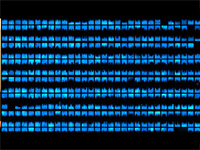
In an example of life imitating art, biologists and bioengineers at UC San Diego have created a living neon sign composed of millions of bacterial cells that periodically fluoresce in unison like blinking light bulbs.
Watch Researchers Create Living 'Neon Signs' Composed of Millions of Glowing Bacteria on YouTube Read Researchers Create Living 'Neon Signs' Composed of Millions of Glowing Bacteria article
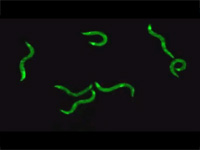
The lowly and simple roundworm may be the ideal laboratory model to learn more about the complex processes involved in repairing wounds and could eventually allow scientists to improve the body's response to healing skin wounds, a serious problem in diabetics and the elderly.
Watch Worms Reveal Secrets of Wound Healing Response on YouTube Read Worms Reveal Secrets of Wound Healing Response article